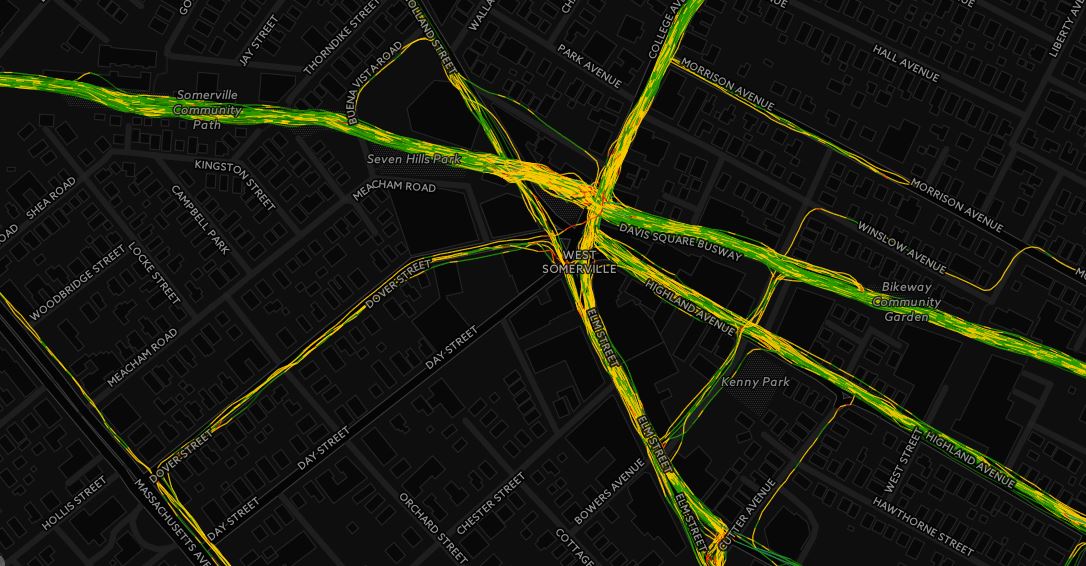After a geo-action packed week at the 2012 Esri UC here my top 10 observations that I had written down in my notebook:
- The spatial stats sessions were great, but for many of the sessions you needed an understanding of basic prob and stats. Even with a basic understanding of stats all of the OLS, GWR, R Squared, and dependent variable talk may have been a little confusing for the beginner (which is totally understandable). However, if you were a stats nut, then these sessions were right on the money.
- Roger Tomlinson’s speech at the Special Achievement in GIS awards ceremony was awesome. His one liners were snappy and his overall message was appreciated by the audience.
- I always like meeting up with my old UConn grad school classmates and I was able to do that a lot at this year’s UC. It is great to talk with them about what they are doing now and where they want to go. At some point we should organize a party…
- I focused on spatial analysis sessions this year’s UC and all the raster analysis sessions I attended were great, and I am looking forward to a number of upgrades in 10.1. I like presentations that progress from a question to a solution and the raster analysis presentations I saw definitely did this.
- You can’t beat the weather in San Diego.
- Seeing the improvements to the arcpy cursors in 10.1 made me happy. Huge improvement in performance, so much so I’ll start using them! Now I have to wait for SP1 when 64bit geoprocessing FINALLY becomes available before I actually upgrade.
- It seemed to me that the only vendors on the floor of the exhibition hall were those promoting/selling the cloud or mobile products. There were a few data vendors out there, but I think they were all pushing cloud services and mobile products as well.
- I always like the graphics on the giant screen during the Esri UC plenary. It must be someone’s full time job to create those “slides”. I wish my powerpoint slides looked that good.
- The “Evening in Balboa Park” was a lot of fun, especially if you got there early and got to the sushi lines quickly. However, if you did have to wait in line for sushi at the Casa De Balboa the unique musician rocking out on the electric cello provided some quality entertainment! Also, Metalachi rocked the house.
- My eight year old stopwatch died in San Diego. This probably explains my horrible, down right embarrassing time in Esri 5k. It’s obviously all my watch’s fault.

Bonus Thoughts – you don’t have to use your ArcGIS Online credits to read these…
- One of the biggest criticism of ArcGIS 10, and rightfully so, was in regards to the quality of the software. If Jack, or any other members of Esri, had talked about efforts to improve the quality of Esri products during the morning plenary I believe you would have seen the hall erupt in applause, because frankly, that’s all we really care about. Reliable, quality software.
- During the plenary Esri announced full 64 bit desktop in a service pack sometime in 2013. Finally…
- I know GIS is firmly entrenched in the military and security sectors, but some of the demos I saw regarding drone data collection and creating spatial data from drone cameras was a little too “Big Brother” for my liking.
- I wish the Padres were in town during the week of the conference.
- Esri Maps for Microsoft Office could be a big hit, but it requires an AGO account and doesn’t come cheap. I can see this as pretty powerful tool for organizations, but managing all those accounts, especially if you can’t tie them into your organization’s account system, might make it a little cumbersome to manage. I need to learn more about EMMO.
Overall, I thought it was a good conference. I did a lot of networking and learned a lot. Like any conference, it is about what you make it. I had a specific agenda that I stuck to and it turned out pretty good.
Were you there? What did you think of the conference? Would you recommend it to your cowokers or others in the geo-professions? Leave a comment!

